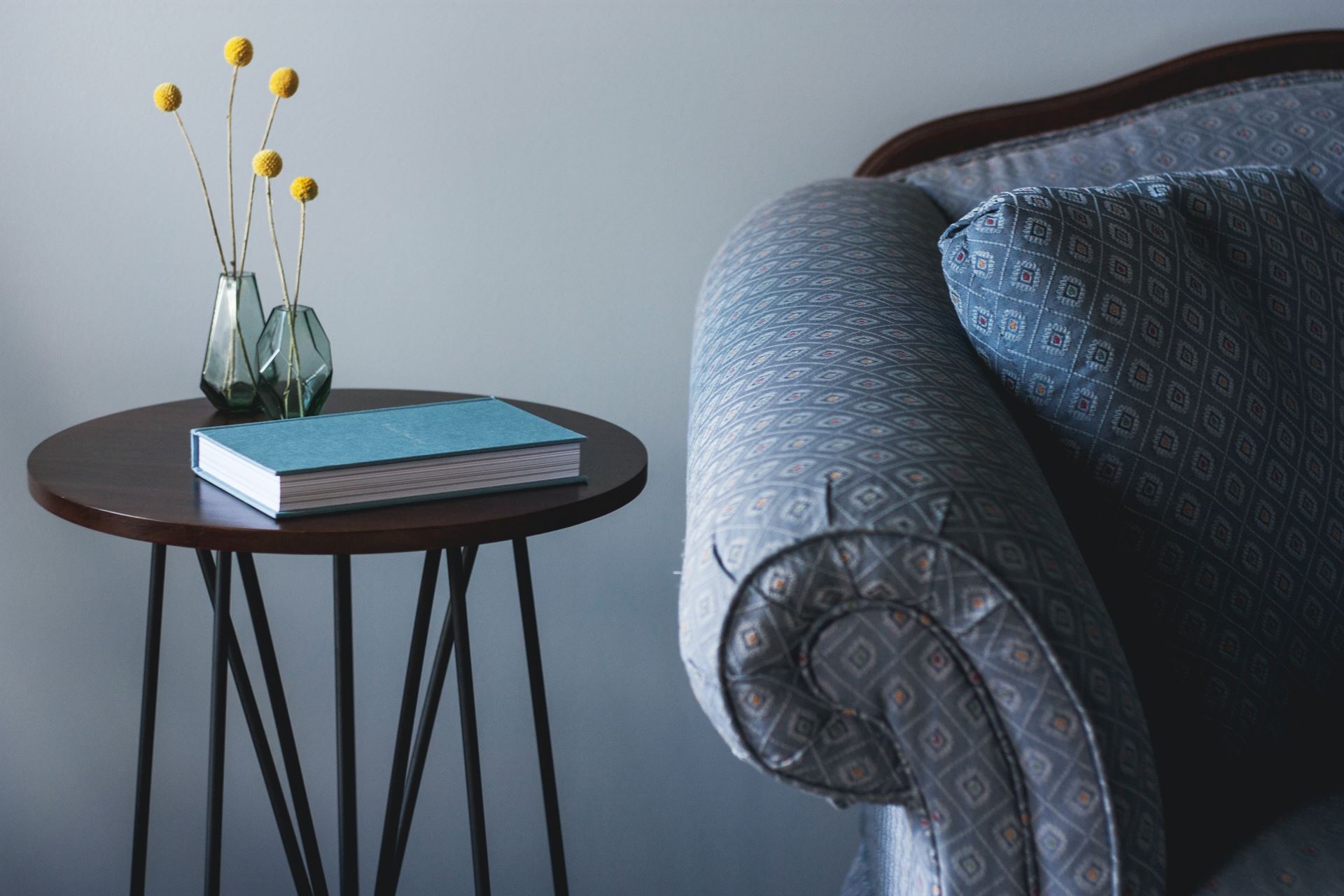I recently started watching the Netflix documentary series Abstract: The Art of Design, and I am enthralled. Each episode in the series focuses on a designer who is innovative in their field – costuming, bio-architecture, toys, even typesetting (I haven’t gotten to that last one yet, but I suspect it will be relevant to my interests). I started with the episode on interior design because I’ve often wanted to learn more about what makes a room feel comfortable rather than cold and bare or cluttered and claustrophobic. I was even more inspired than I expected to be, and I was surprised by how many of the insights also apply to my editing practice.

Photo by Kari Shea on Unsplash
The interrogative editor
The interior design episode focused on Ilse Crawford, a designer, teacher, and creative director who advocates for “systemic wellbeing” and humanism in design. She starts each of her projects with an interrogation: What is the purpose of this space and who is it for? What would it mean to promote wellbeing in this space?
Replace the word “space” with the word “text,” and you have a good attempt at an editor’s creed: make every effort to understand what the author is trying to convey to their readers, who those readers are, and what textual conditions will help them receive the author’s message. Just as Swarovski crystal glassware doesn’t belong in a daycare, a technical manual is no place for an elaborate metaphor, no matter how beautifully constructed; it doesn’t serve the user’s purpose and can actually detract from it.
The imaginative editor
Imagination is the second component of Ilse Crawford’s systemic wellbeing strategy. We often think of imagination and creativity as core skills for writers, but I think that editors use more imagination than we give ourselves credit for. It’s perhaps most obvious with the developmental and structural levels of fiction editing, when an editor can work closely with an author to create the words, characters, and plots that align with the author’s vision. But we also flex our imaginations as line editors, when we recast an academic author’s jargon-filled argument in plain language, or as proofreaders, when we reword a sentence to avoid an awkward line break while retaining the original sense and pagination.
As part of her imaginative process, Crawford uses materials (such as textiles, wood, metals, and floorings) and tools (such as the humble measuring tape) not as ends in themselves but as means of creating physical environments that are inviting, soothing, energizing, or otherwise engaging, according to the client’s needs. This principle is useful for editors to keep in mind, too – we’ve all been tempted to shoehorn a pretty turn of phrase into a paragraph that didn’t need it, but we should never be so enamoured with the words themselves that we lose sight of the author’s purpose and the reader’s requirements.
The empathetic editor
Ilse Crawford returns to questioning mode for the third component of her systemic wellbeing strategy: empathy. Having learned about their client’s priorities in the interrogation stage, Crawford and her design team ask themselves, “How would the client feel in this space? What do they need?”
The living beings using the space are at the heart of every design decision Crawford and her team make, from the grandest lighting concept to the smallest tabletop bowl, and so it is with the empathetic editor. It’s why editors champion inclusive language that tells a diverse readership, “You are welcome here,” and why we strive for consistency within a text to create a harmonious reading experience.
A text is a space that the reader inhabits intellectually and emotionally. It has a function and an atmosphere; it affects the reader while they’re immersed in it and leaves an impression with them afterwards. As editors, we can use our powers of interrogation, imagination, and empathy to make each text we work on functional, accessible, and inviting environments for readers to step into.